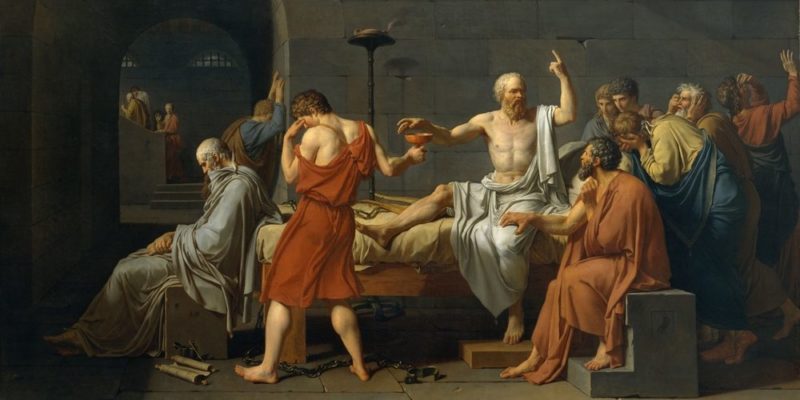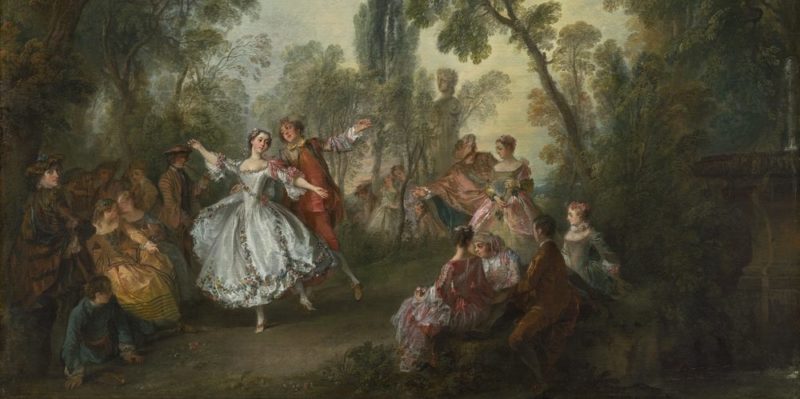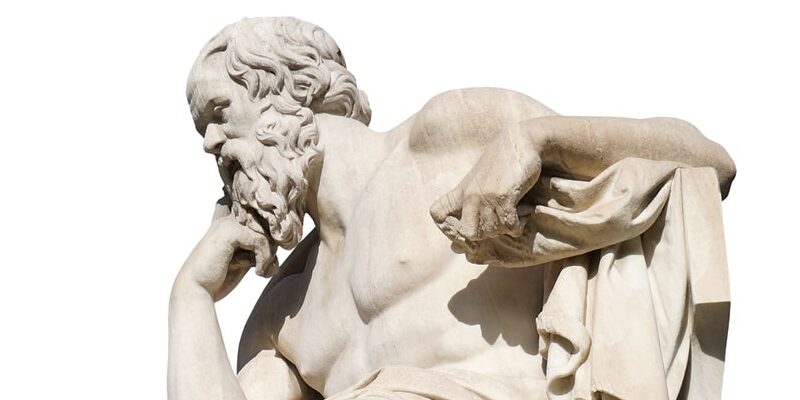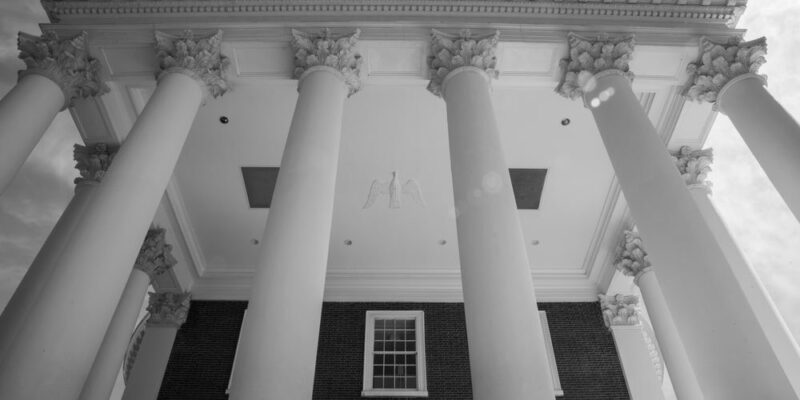We explain what neoclassical art is and its main characteristics. In addition, its origin, its manifestation in various disciplines and more.
What is neoclassical art?
The art neoclassical is a current that emerged in France in 1760 , which influenced the painting and other visual arts. Its heyday was around 1785 and was characterized by reflecting the thinking of enlightened intellectuals (a movement that supported the use of reason to acquire knowledge ) and was based on the Greco-Roman culture that stood out for being intellectual and refined .
Neoclassicism opposed the Baroque style (1600-1750) which was characterized by a gloomy aesthetic, overly decorated and vain, to represent the passions and emotions of the individual.
Neoclassical art, influenced by the Enlightenment and by the French Revolution , put aside emotions to express through reason both moral values , freedom and patriotism as well as social progress based on new industries and scientific discoveries.
Around 1800 Neoclassicism was displaced by the new trend of Romanticism that was characterized by exalting freedom, emotions and the subjectivity of the individuality of being, in rejection of the predominance of the enlightened reason of Neoclassicism.
Characteristics of neoclassical art
Among the main characteristics of neoclassical art are:
- It arose in reaction to the baroque style that prevailed in the 1720s and that was sensual, superficial and based on passions.
- It was founded on ideals related to the morals of ancient Greco-Roman culture .
- It reflected the reality of a society in full transformation driven by the Industrial Revolution and scientific discoveries.
- It manifested itself on principles of simplicity, symmetry, and geometry .
- It reached great diffusion with the phenomenon of the Grand Tour, which consisted of a student trip to archaeological sites in Europe for young people of the aristocracy.
- It consisted of an objective and realistic art that, through the use of reason, could understand the progress of society throughout history.
- He replaced religious ideas with the use of enlightened reason.
- It required rigorous intellectual training on the part of neoclassical artists.
Context of neoclassical art

Neoclassical art originated in France during a period of great political and social revolutions, and coincided with the beginning of the Contemporary Age . Among the main events of the time, the following stand out: the philosophical movement of the Enlightenment, especially with the creation of The Encyclopedia (1751), the Declaration of Independence of the United States (1776) and the French Revolution (1789).
Neoclassicism was greatly influenced by archaeological discoveries in ancient Roman cities , such as the excavations in the cities of Herculaneum in 1738 and Pompeii in 1748. Enlightened thinkers and researchers were fascinated by the aesthetics of ancient culture .
The new archaeological knowledge obtained through the excavations made it possible, for the first time, to identify different chronological periods related to Greco-Roman art and its evolution.
Neoclassical painting

Neoclassical painting reflected a social and political order based on reason and morals, over the emotions, feelings and irrationality that baroque art used to manifest. Situations related to the French Revolution and the archaeological finds of the Greco-Roman culture were highlighted .
In neoclassical painting, uniform surfaces and backgrounds predominated, which used to be in semi-darkness in the background, with the characters that stood out for the use of light and light tones .
Neoclassical artists maintained the harmony of proportions and the use of shadows and lights to resemble the real vision of things. The simplified settings had fewer ornaments and elements so that the characters stood out better.
Among the main representatives of neoclassical painting stood out:
- Anton Raphael Mengs (1728-1779). He was a German painter who was noted for his works Parnassus, Perseus and Andromeda, The Adoration of the Shepherds and The Triumph of History over Time .
- Francisco Bayeu (1734-1795). He was a Spanish painter who stood out for his works El Olimpo: Battle with Giants, El Paseo de las Delicias, La Sagrada Familia and El Puente del Canal de Madrid .
- Jacques-Louis David (1748 - 1825). He was a French painter who was noted for his works The Oath of the Horatii, The Death of Socrates, The Death of Marat, Madame Récamier and Napoleon Crossing the Alps.
- Jean Auguste Dominique Ingres (1780 - 1867). He was a neoclassical and romantic French painter who was noted for his works The Great Odalisque, Jupiter and Thetis, Napoleon enthroned, Apotheosis of Homer and The Bathing Girl of Valpinçon .
- Johann Heinrich Füssli (1741 - 1825). He was a Swiss historian, draftsman and painter known by the pseudonym Henry Fuseli who was noted for his works The Nightmare , The Shepherd's Dream and Thor beating the Midgard Serpent .
Neoclassical literature
Neoclassical literature was characterized by essays , novels and fables that transmitted philosophical and moral concepts in an objective way and explained from reason . He opposed the ancient system of religious thought that had a grandiose view of things and the narrative that played with words to appeal to the emotions.
Among the main representatives were:
- Daniel Defoe (1660 - 1731). He was an English writer and journalist who was noted for works such as Memoirs of a Gentleman , On the Education of Women and The Life and Amazing Adventures of Robinson Crusoe .
- François Voltaire (1694 - 1778). He was a French writer, historian, and philosopher considered one of the leading figures in the enlightened movement. He was noted for works such as Oedipus , Candide or Optimism and Fanaticism or Muhammad .
- Felix María Samaniego (1745 - 1801). It was a Spanish writer who was noted for works with morals as Fables moral , Fables of Samaniego and The Ant and the Grasshopper .
- Fray Diego Tadeo González (1733 - 1794). He was a Spanish writer and poet who stood out for works such as El bat alevoso , Poesías del M. F Diego González del Orden de San Agustín and Lectures on the history of Joseph .
- Gaspar Melchor de Jovellanos (1744 - 1811). He was a writer and politician who stood out for his report on the Agrarian Law , his Memory on public education and his literary work The Honest Delinquent .
- Jonathan Swift (1667-1745). He was an Irish writer who was noted for works such as Gulliver's Travels , The Battle Between the Ancients and the Moderns, and A Tale of a Barricade .
- José Cadalso (1741 - 1782). He was a military man, writer and poet who stood out for works such as Gloomy Nights , The Scholars of Violence and Moroccan Letters .
- José Iglesias de la Casa (1748 - 1791). He was a Spanish priest and poet who stood out for works such as Posthumous Poems , Pastoriles y lricas and Poesías de D. Josef Iglesias de la Casa .
- Leandro Fernández de Moratín (1760 - 1828). He was a Spanish playwright, poet, and translator who stood out for works such as The Girl's Yes , The Old Man and the Girl, and for translating Shakespeare's Hamlet .
- Tomás de Iriarte (1750 - 1791). He was a Spanish writer, playwright and poet who stood out for works that mixed fable and comedy, such as El señorito mimado: la senorita malcriada , Poetry more than spicy and Music: poem .
Neoclassical sculpture

Neoclassical sculpture was characterized by the use of white marble without painting or without polychrome as well as the technique used in Greco-Roman art. For neoclassical artists, the coldness of white marble connoted simplicity and beauty, especially in human figures, which had subtle expressions, their bodies were more realistic and with fewer ornaments than those used in baroque art.
Neoclassical architecture

Neoclassical architecture was characterized by being imposing in terms of the size of the buildings, but with less ornamental finishes . Columns, arches and domes in horizontal and robust constructions stood out.
Among the main architectural works of the Neoclassical stand out:
- Arc de Triomphe, in Paris.
- Saint Petersburg Cathedral of the Holy Trinity in Russia.
- Capitol, in the United States.
- Prado Museum, in Spain.
- Versailles Royal Opera House in Paris.
- Astronomical Observatory, in Spain.
- Bourbon Palace, in Paris.
- Garnier Palace, in Paris.
- Pantheon, in Paris.
- Rotunda of the University of Virginia, in the United States.
She has pursued her studies in The United States, where she has graduated in Business and Economics and is currently finishing her Master studies in International Economics and Finance. Miss. Amputee is fluent in three languages: English, Spanish and Russian and has elementary knowledge of French and Italian. She love exploring how Collaborative Research Group can become the best tool to achieve the (necessary) educational change. .
Leave a reply
Your email address will not be published. Required fields are marked *Recent post

Sport: What Is It, Types, Risks, Features, Characteristics and Examples

Dogs: Emergence, Features, Characteristics, Feeding and Breeds

Story: Definition, Elements, Structure, Features and Characteristics

